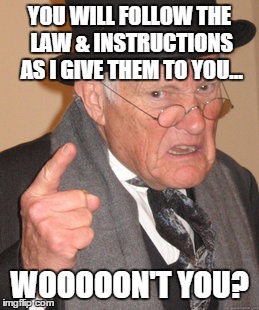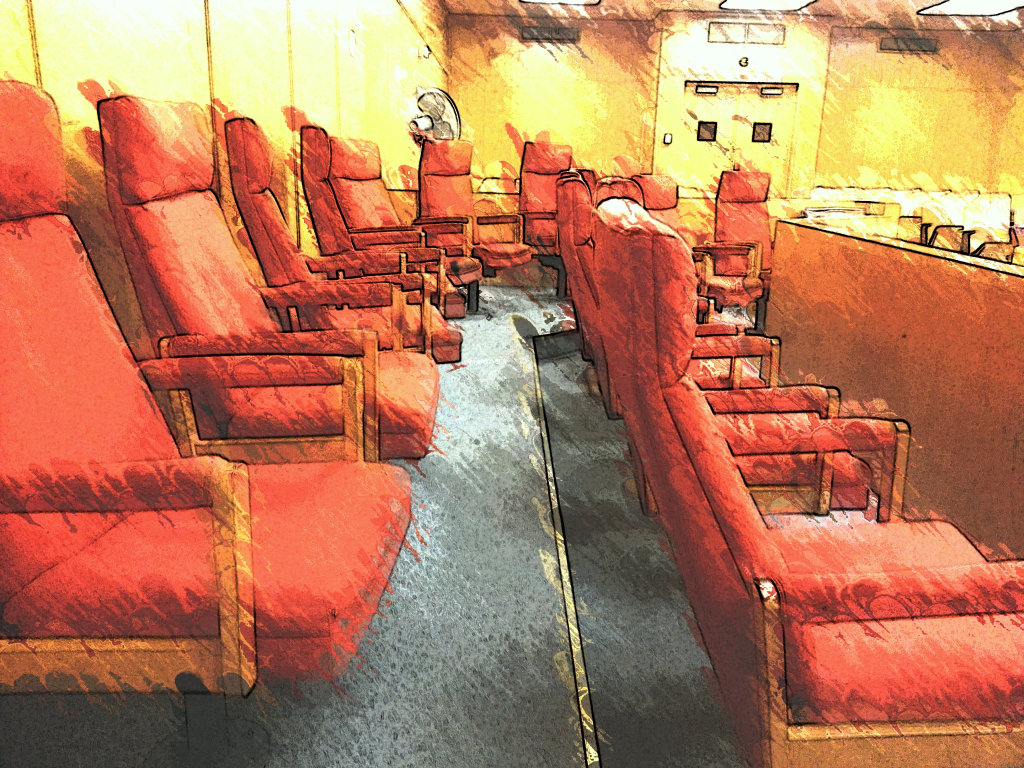By Rich Matthews
“Well, Counsel, that’s why the Good Lord gave you a few peremptory challenges.”
– An actual judge at sidebar, denying a righteous cause challenge

In August, the Arizona Supreme Court eliminated peremptory challenges in jury selection for both criminal and civil cases. The court explained, following long study and abundant input, that peremptory challenges were subject to abuse by trial counsel, and concluded that eliminating them would produce fairer juries and less race-based decision-making by jurors. I would only add that abolishing them will reduce race-based decisions about jurors by counsel.
I agree with abolishing peremptory challenges as a means of getting fairer and less biased juries, but not for the reasons anyone seems to be discussing.
The primary reason given by those who would abolish peremptory challenges is that lawyers abuse them, exercising them for improper reasons like perceived race, perceived sexual orientation, gender, and other immutable characteristics. That happens. It’s shameful. It’s unethical and unlawful. And still it happens. Batson vs. Kentucky turns 35 years old this year, yet in all that time has not erased lawyers’ abuse of peremptory challenges. They say that the only way to end the abuse of peremptory challenges is to end peremptory challenges. I agree.
Yet, I maintain that the benefits don’t just stop at reducing racial gamesmanship by counsel in jury selection . . . and in fact will produce fairer juries by finally letting us get real about cause challenges on attitudes and life experiences of prospective jurors. But let’s back up a second.
It’s predictable and unfortunate that the majority of attorneys quoted in the coverage I’ve seen – along with trial consultants who appear to think their main value is advising attorneys which jurors to kick via peremptory – oppose getting rid of them. I submit that this is largely a fear-based response, an innate reaction to A Change In How We’ve Always Done It. Look, folks, it just doesn’t work to answer “How do we reduce bias in jury selection and in juries themselves,” by saying “Keep doing exactly what we’ve always done.”
Try this thought experiment right now, please: What good do peremptory challenges do? Why keep them? Not rhetorical questions. Take a moment.

More than likely, you thought something like “safety valve” or “backstop.” Fair enough. But it’s time to stop seeing peremptory challenges as a “safety valve” or a “backstop” without asking ourselves the crucial follow-up question: Wait – safety from what, exactly? We’ve become so accustomed to peremptory challenges that we stopped asking why we need them if we have statutory and caselaw definitions of bias in prospective jurors, kickable by cause challenges.
And the answer to what we need safety from is: bad decisions by judges on cause challenges. Peremptory challenges (supposedly) give us a recourse against bad rulings on cause challenges. Because let’s be clear: If judges granted cause challenges according to the statutes and caselaw, we would never need a peremptory challenge.
But judges don’t always – or even often – grant cause challenges when a party has established “The existence of a state of mind on the part of the juror in reference to the case, or to any of the parties, which will prevent the juror from acting with entire impartiality, and without prejudice to the substantial rights of any party.” (Cal. Code of Civil Procedure, Sec. 225(b)(1)(c), emphasis added. Other states’ statutory definitions of bias are substantially similar.)
And why don’t judges grant cause challenges when we’ve established that this person is not entirely impartial? You’ve all heard it hundreds of times: “Well, counsel, you still have some peremptories left. You’ll have to use one.” While lawyers are using peremptories as a backstop, judges are using your peremptories as their backstop, too. And that is the heart of what is wrong with peremptory challenges in practice, not theory: They mostly function as an excuse for judges to avoid granting cause challenges.
I submit that they are hurting our chances of getting rid of bad jurors more than they are helping us.
And why do judges want to avoid granting cause challenges with a standard as strong as the statutes say? For the same reason they innately avoid any ruling they can avoid: fewer opportunities for reversal. Judges live in fear of that. No judge wants to be the “Reversal Ralph” or “Remanded Rebecca” of their courthouse. And they do notice these things. So do the judge reviews on the website The Robing Room.
Which brings us to what I believe will be the mechanism that will finally prompt judges to grant righteous cause challenges rather than punting – fear of reversal. In the post-peremptory world, denials of cause challenges in which a venireperson is on the record as not entirely impartial should be appealed. In short order, one hopes, there will be a shift in the legal culture, a nudge to trial judges to rule closer to the statutes.
And there’s good news on the appellate front, too. Appellate courts also use peremptory challenges as their crutch, as their excuse for punting. “Oh, you didn’t use all your peremptories? Then you can’t appeal jury selection issues.” In the absence of peremptories, appellate courts will have to abandon this extra-legal and inappropriate threshold question, and look closer at jury selection issues that run away from the statutes. Trial judges will get the point.
Somewhere along the way, outside the statute books and inside the courtrooms, the evaluation of juror bias got reversed. The written rule is jurors must have “entire impartiality,” but the de facto standard has long been “Anything less than confessed, admitted bias is acceptable if the citizen will nod in the direction of trying to remain fairandimpartial.” Judges look for any glimmer of an example of non-bias to avoid excusing a prospective juror. They even invented a fictional thing that we all have tacitly agreed to call “rehabilitation.” Notably, “rehabilitation” does not appear anywhere in the jury selection statutes.
“Rehabilitation” of a citizen’s mindset is a bad joke for at least two reasons. One is that a citizen holding a particular opinion about some issue is not a flaw or defect or malfunction. So the concept of a court rehabilitating an opinion should be repugnant. Rather, that opinion renders that person unsuitable as a juror for this case, but it’s not an injury to be repaired on the fly. Thank and excuse them, and let’s move on. Like the statute says.
Which brings us to the second reason “rehabilitation” is nonsense: It doesn’t work. Adults don’t suddenly change their mind when asked to by the person wearing a black robe and sitting on the highest piece of furniture in the room. (It ain’t for nothing that the law courts retained the ecclesiastical costume and set design when they split off from the church.) Instead, “rehabilitation” is the practice of rehearsed professionals leading mostly newbie laypersons through some leading questions to get to the magic words –
“Nevertheless, Ma’am, you could put all that aside and stay fairandimpartial in this trial, couldn’t you?”
“Um. I mean. I guess.”
“BOO-YAH, YOUR HONOR! NO BIAS!”
Let’s be honest: that’s usually enough to lose a cause challenge. Yes, the magic words were spoken. No, the mind was not changed.
Imagine how much easier it would be to just excuse a prospective juror when there are real questions about his or her entire impartiality. Indeed, if judges would follow the statutory standards for bias and excuse prospective jurors when doubt is raised, rather than after several minutes of (not) rehabilitation by bench and counsel, jury selection would go faster— a pretty significant fetish for judges.
And there is one more consideration about peremptories and the elimination of bias both in juries and about juries: Peremptory challenges might have been originally designed on the theory of helping counsel eliminate jurors with biases . . . but in reality, the reverse is true: They mostly serve counsel’s own biases. How many prosecutors have reflexively sought to rid jury boxes of people of color when the criminal defendant is also of color? How many civil litigants have sought to eject people of certain ethnicities because they are thought to be less (or more) generous with damages? This garbage – and it is garbage – has been taught in CLEs in this century.
The peremptory system just doesn’t work. We’ve tried fixing it. Batson tried. States have built on and extended beyond Batson. The California Supreme Court, for example, has made significant efforts to thwart the game of “give race-neutral justification after exercising a secretly race-conscious peremptory,” including shifting burdens of proof and reversing presumptions. Still the abuse continues. The only way to get rid of lawyers misusing peremptories is either to get rid of lawyers or get rid of peremptories. Getting rid of peremptories is the right first choice.
And now let’s see how judges rule on questions of real juror bias when they, lawyers, and appellate courts all lose the crutches.
